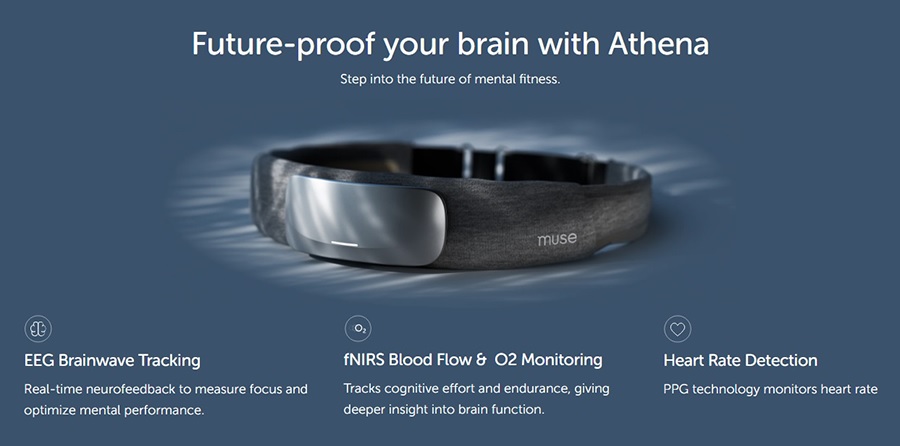
On days when focus feels slippery, the problem is not just in your head. The heart and the nervous system send a steady stream of signals that shape how clear or jumpy your attention feels. Heart rate variability, or HRV, is one of the cleanest windows into that conversation. With a few practical habits, you can nudge HRV in a healthier direction and, in turn, give your prefrontal cortex a better platform for steady work. Here we break the topic into simple pieces, what HRV measures, why it tracks with attention control, how to train it without turning your evening into a lab, and a four week plan you can run from home.
Contents
What HRV Really Measures
HRV refers to the natural, beat to beat changes in the time between heartbeats. A steady heart rate can still have rich variability under the hood, a sign that your autonomic nervous system is flexible and responsive. Two branches tug on that timing. The sympathetic branch prepares you to act. The parasympathetic branch, especially the vagus nerve, promotes recovery and precision. When the parasympathetic influence is strong and well tuned, the gaps between beats show a pleasant wobble that rises and falls with the breath. This pattern is called respiratory sinus arrhythmia. It is not a trick, it is your body adjusting blood pressure and gas exchange efficiently with every inhale and exhale.
People often hear that higher HRV is always better. Reality is more personal. HRV changes with age, fitness, sleep, temperature, and even the way you measure it. A recent cold, a hard workout, or a late night can lower values for a day or two. Rather than chasing other people’s numbers, watch your own baseline across weeks. The trend and the context matter far more than any single reading.
How HRV is commonly measured
- Time domain metrics: such as RMSSD, a short term measure that reflects parasympathetic activity.
- Frequency domain metrics: which look at how much variability clusters around certain rhythms, especially the band influenced by breathing.
- Spot checks versus sleep: overnight values tend to be less noisy. Daytime spot checks are useful for training and patterns, not competition.
Attention Control and the Heart–Brain Conversation
Attention control depends on a network that includes prefrontal and parietal regions, parts that set goals, hold them in mind, and manage interference. These regions do not work in a vacuum. They are influenced by body signals that arrive with every breath and heartbeat. Baroreceptors in blood vessels sense pressure and send information upward. Vagal pathways carry their own messages about internal state. When these signals suggest safety and adequate resources, the brain is more willing to allocate energy to the patient work of holding a plan and ignoring noise. When signals suggest threat or exhaustion, attention narrows and becomes twitchy or collapses into avoidance.
Breathing is the simplest steering wheel you have for this system. Slow, even breaths shift the balance toward the parasympathetic side. As the breath slows, variability tends to organize into a clean rhythm. People often describe the subjective feeling as calm but awake. This state supports the kind of sustained attention that a good writing block or a complex conversation requires.
Everyday signs your attention control is body driven
- You grind through tasks with clenched jaw and shallow breathing, then crash hard around midafternoon.
- Your mind jumps at every notification, especially when you are hungry or short on sleep.
- After a short walk with slower breathing, the same task suddenly feels reasonable again.
Practical HRV Training for Focus
You do not need fancy gear to teach your system a steadier rhythm. A five to six breaths per minute pace is a common starting point. That is roughly in for four, out for six. Sit tall, breathe quietly through your nose if comfortable, and let your belly move. Two to five minutes before a focus block often changes the feel of the next half hour. You can also use this breathing during breaks to reset before the next meeting. The point is not to hit an exact number. The point is to find a relaxed, repeatable cadence that you enjoy.
Finding your personal pace
- Start at a 4 and 6 pattern for ten breaths. If you feel tense, shorten to 4 and 5, or skip the pause entirely.
- Notice the moment your shoulders soften and your jaw releases. That is your signal you are near a good pace.
- After two minutes, check whether your next task feels clearer. If yes, save the setting in your breathing app or write it on an index card.
Short protocols that fit real schedules
- Pre work primer: two to three minutes of paced breathing, then a 25 minute focus sprint.
- Meeting buffer: one minute of long exhales while looking out a window before you click Join.
- Afternoon rescue: a five minute walk with nasal breathing, then a short water break, then the next task.
Consistency matters more than perfection. Five brief sessions across a week often help more than one long session you resent. If you track HRV overnight, look for steadier values over several weeks. If you do not track, use a simple scale for clarity and calm. The goal is better work with less strain, not a trophy graph.
Combining HRV Biofeedback with EEG and fNIRS
Biofeedback gives you a mirror. HRV biofeedback shows you how your breathing pattern changes the variation between beats in real time. EEG based tools show how steady or distracted your brain rhythms look during a brief attention exercise. A consumer EEG headband, such as the Muse device, is one option. It provides simple audio cues as you practice settling your attention. It is not a medical device, and it does not diagnose conditions, yet many people find that it helps them build a consistent habit. fNIRS systems, which estimate changes in oxygenated and deoxygenated hemoglobin near the surface of the brain, can reflect the vascular side of effort. Consumer fNIRS options are limited, however the principle is still useful, higher effort usually leaves a bigger oxygenation footprint, so pace yourself.
A simple combined session
- Warm up, two minutes: slow nasal breathing at your comfortable pace.
- EEG attention exercise, five minutes: use your device if you own one, or practice quietly noticing the breath and returning when your mind wanders.
- Work block, twenty to thirty minutes: single task with notifications off. Keep a pad for stray thoughts.
- Reset, three minutes: stand, sip water, widen your gaze, and take six long breaths.
This stack teaches your system a rhythm, calm, engage, reset. People often report that the pre block breathing plus a short attention exercise lowers the time it takes to settle into real work. If you already meditate, treat the EEG session like a metronome during practice rather than a scoreboard.
A Four Week Heart–Brain Focus Plan
Use this plan as scaffolding. Keep it friendly. If you miss a day, restart at the next block without drama. Write brief notes. Patterns appear quickly when you track what you actually did rather than what you meant to do.
Week 1: Notice and normalize
- Two focus blocks per workday, 20 to 25 minutes each. Begin with two minutes of paced breathing.
- After each block, rate clarity and calm on a one to ten scale. Jot one sentence about posture, light, and interruptions.
- Evening anchor, five minutes of slow breathing to mark the end of work.
Week 2: Add feedback and movement
- If you own an HRV or breathing app, use a visual pacer twice daily. Keep sessions short so compliance stays high.
- Add a five minute walk after lunch with relaxed nasal breathing. Aim for an easy, rhythmic pace.
- If you have an EEG headband such as Muse, add a five minute session before your hardest block and note whether you settle faster.
Week 3: Protect the heavy work
- Find your lightest hour from the first two weeks of notes. Schedule the most demanding task there.
- Use the combined stack, breathing, five minute attention exercise, focused work, short reset.
- Batch messages into two or three windows so they stop nibbling at your attention budget.
Week 4: Personalize and sustain
- Pick the two habits with the biggest impact. Set calendar anchors. Put physical cues on your desk, a breathing card, water, a small timer.
- Run a simple A and B test. Try four breaths in, six out for two days, then five and five for two days. Keep the pattern that feels calmer and supports better work.
- Plan a small end of week reward, a phone free walk, a favorite playlist during chores, or ten quiet minutes with a book. Positive endings teach your system to return.
HRV is not a magic number, it is a friendly guide. When you shape your breathing, posture, and schedule to support healthy variability, your attention control often improves as a side effect. Pair short HRV sessions with brief attention exercises, keep work blocks clean, and finish the day with a clear off ramp. Most people do not need more willpower. They need better rhythms.

